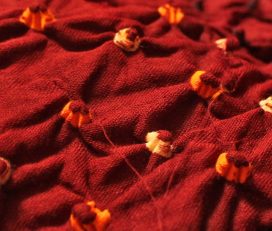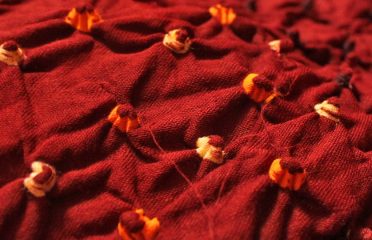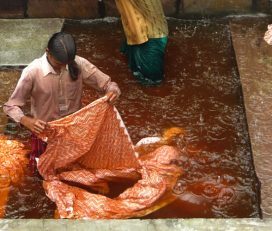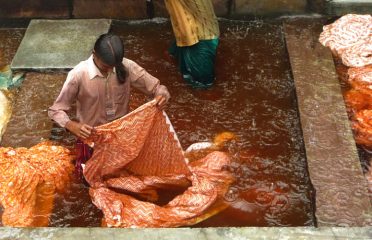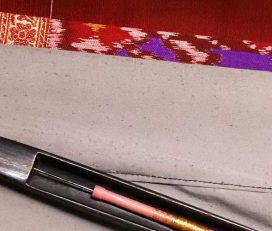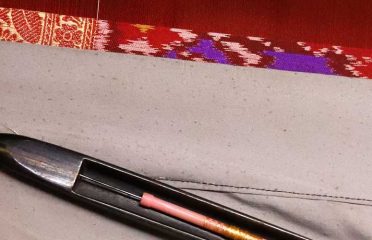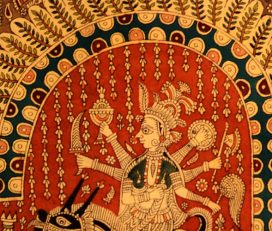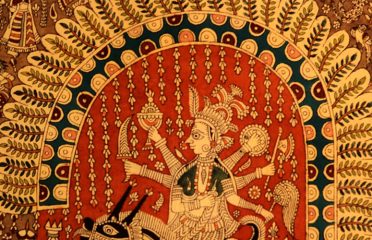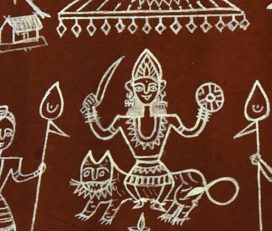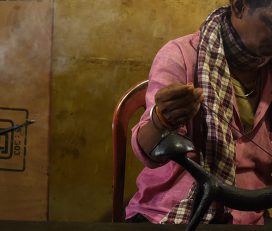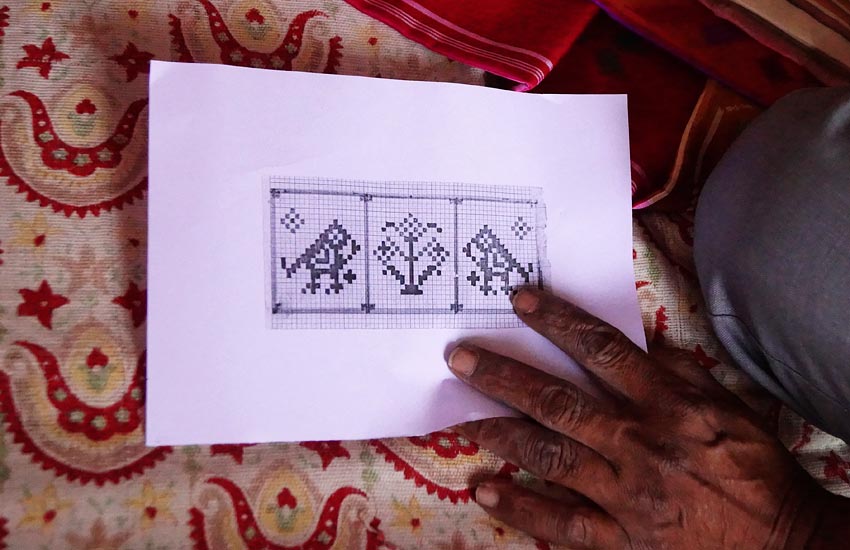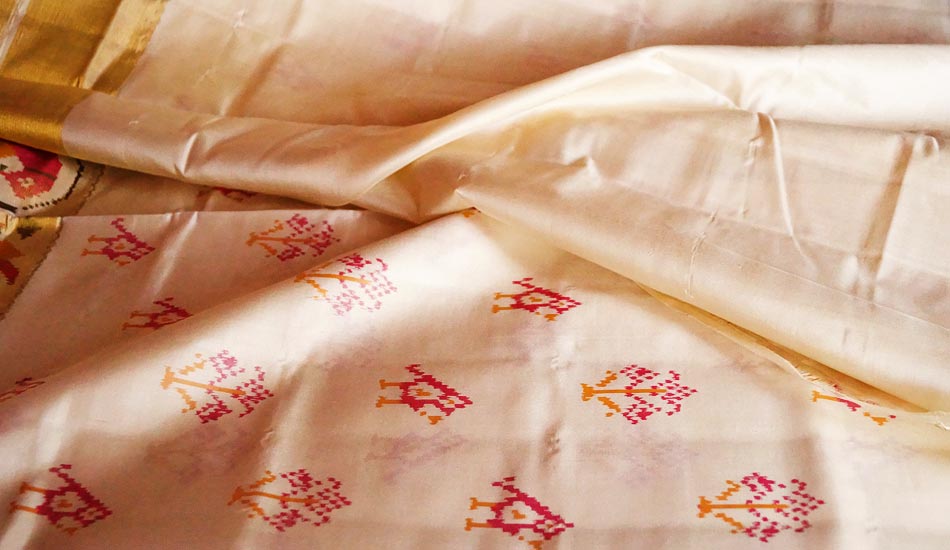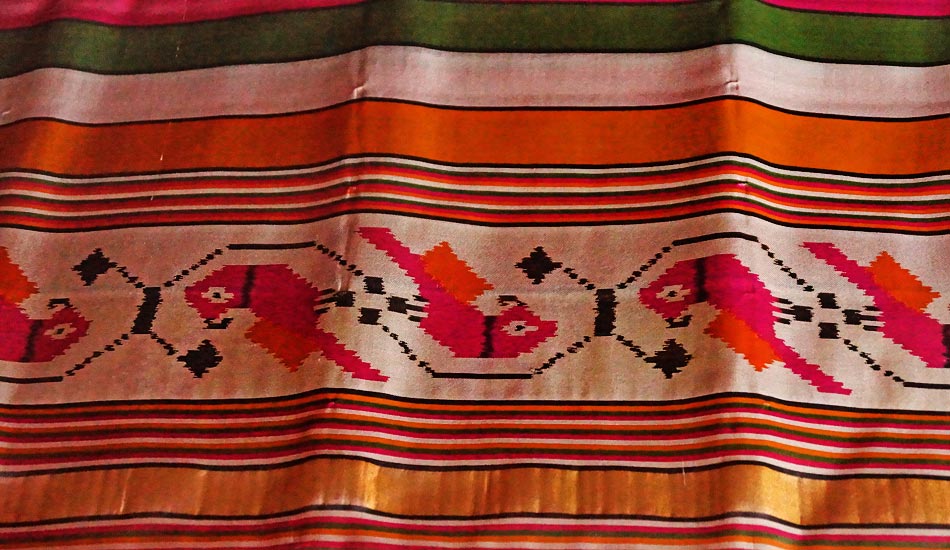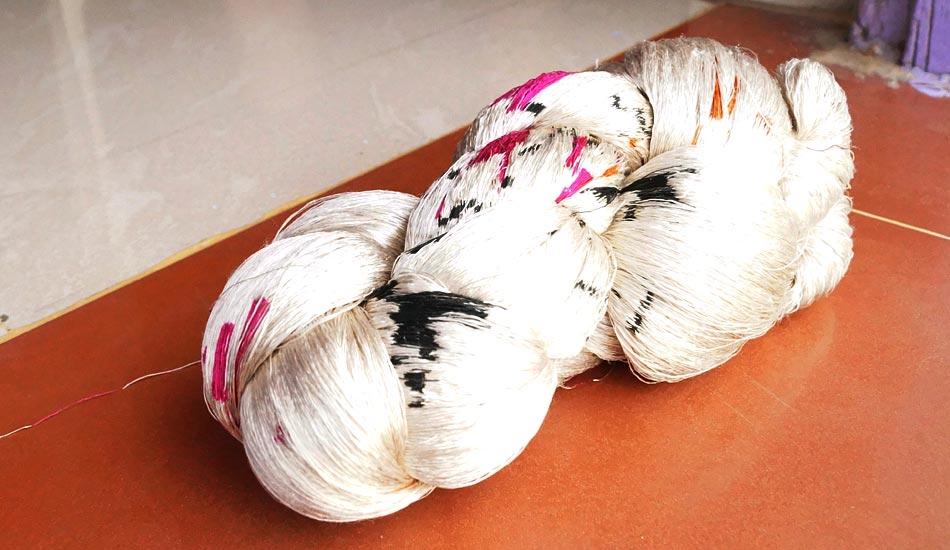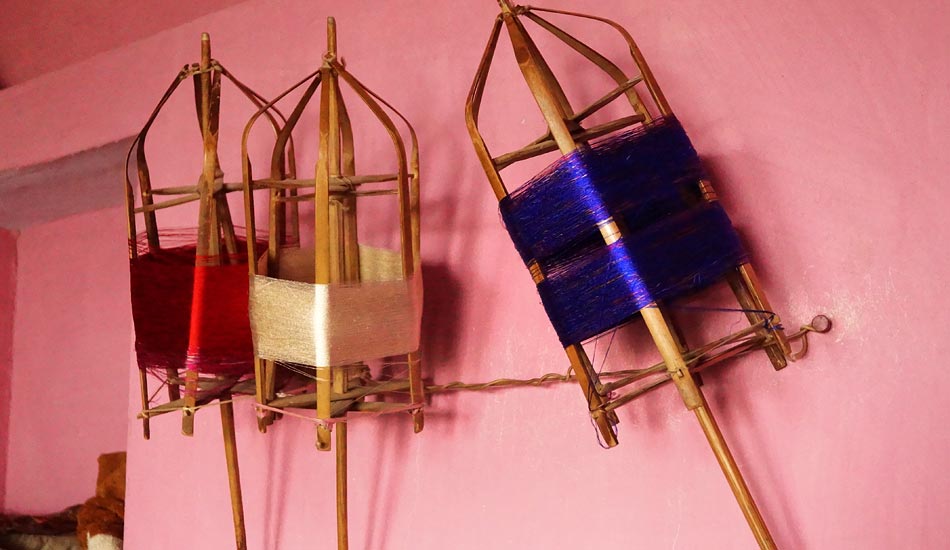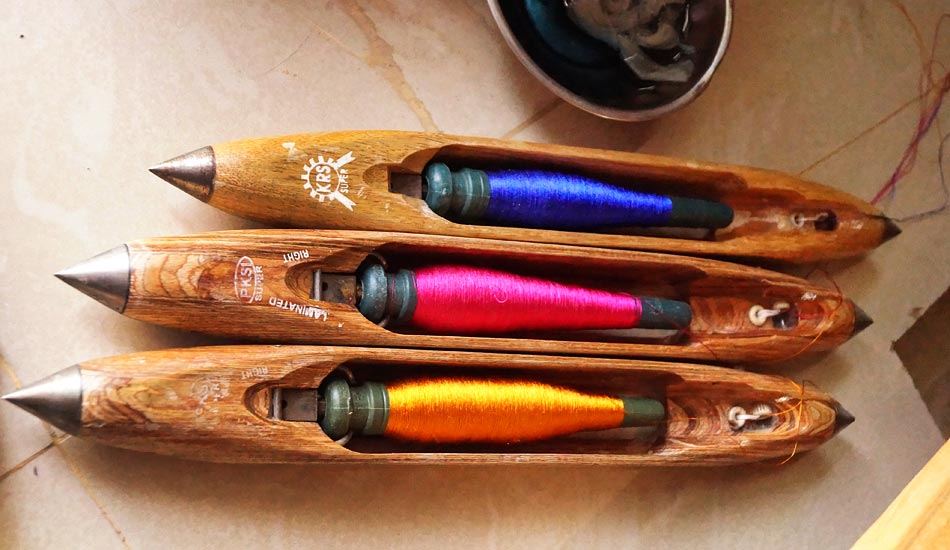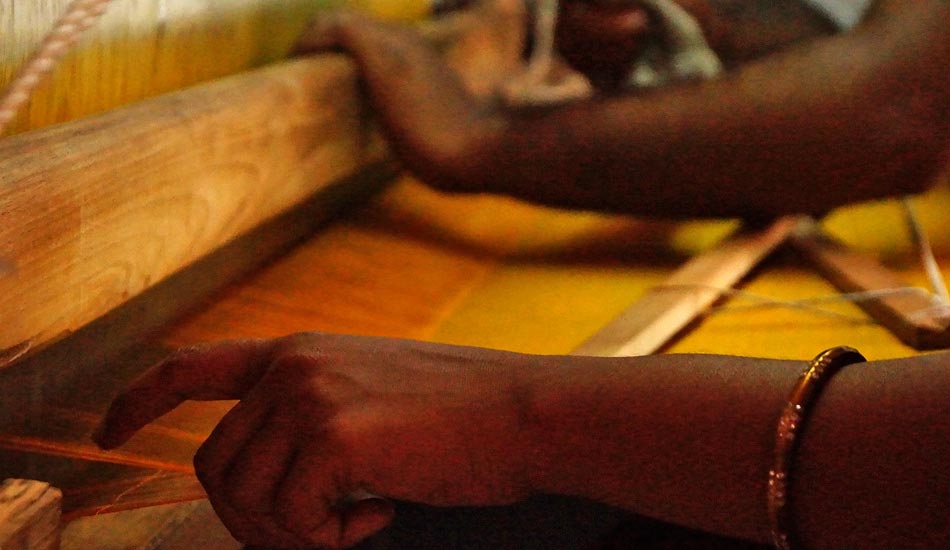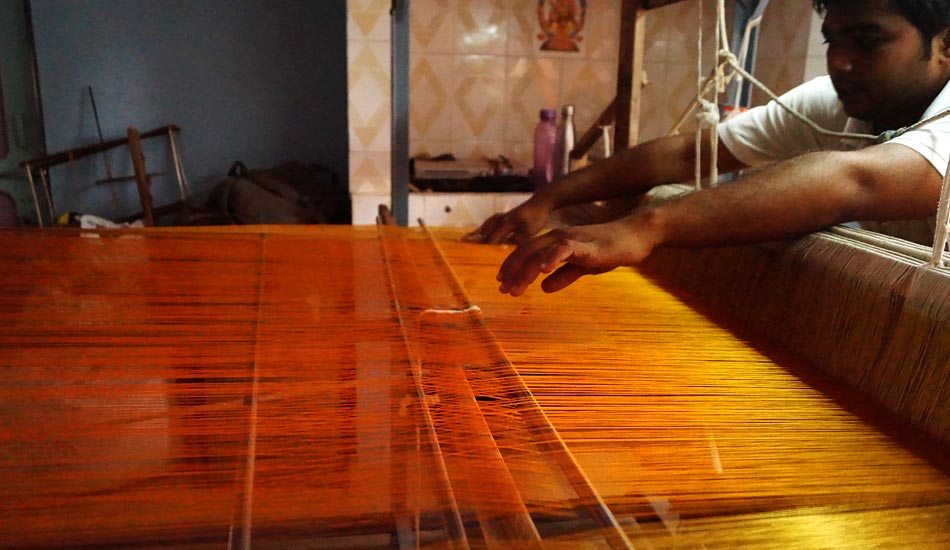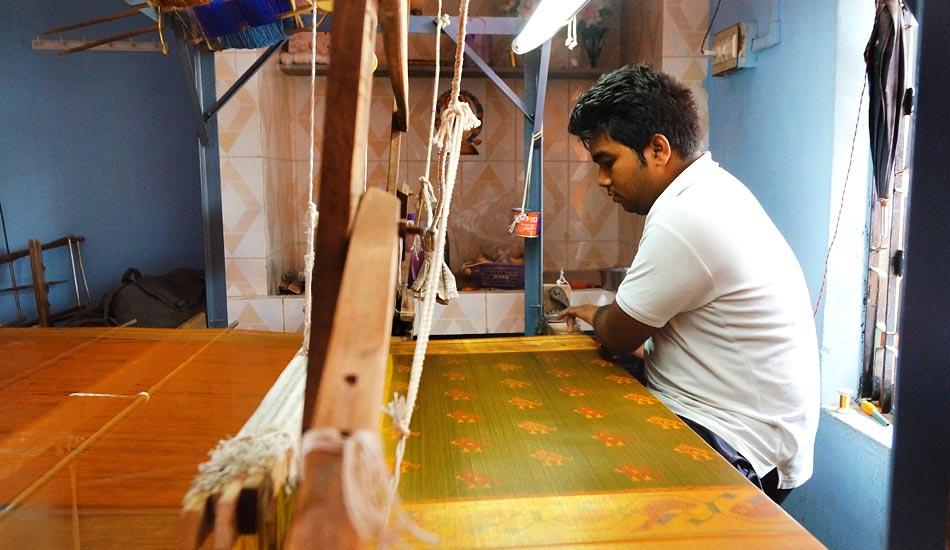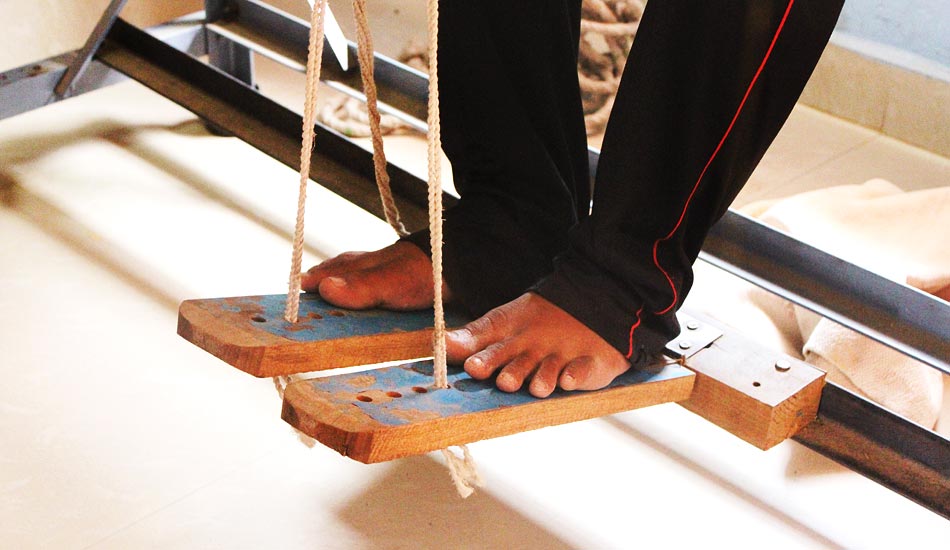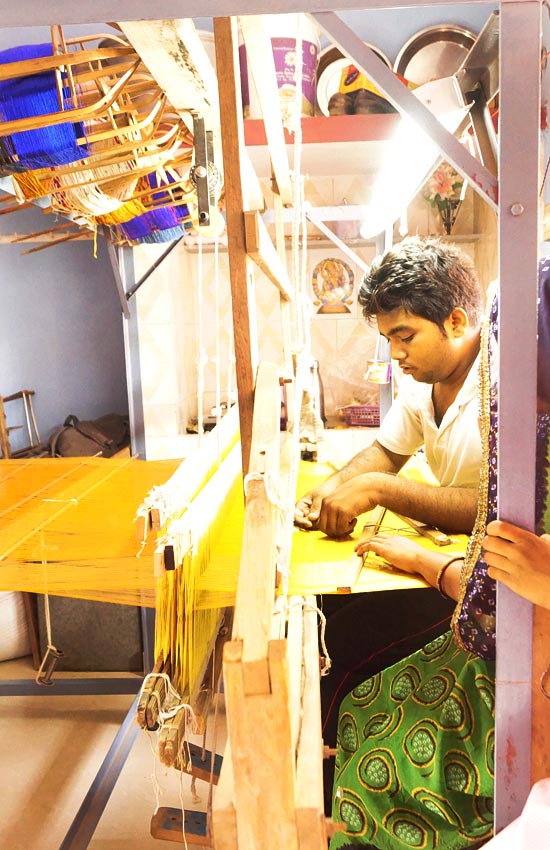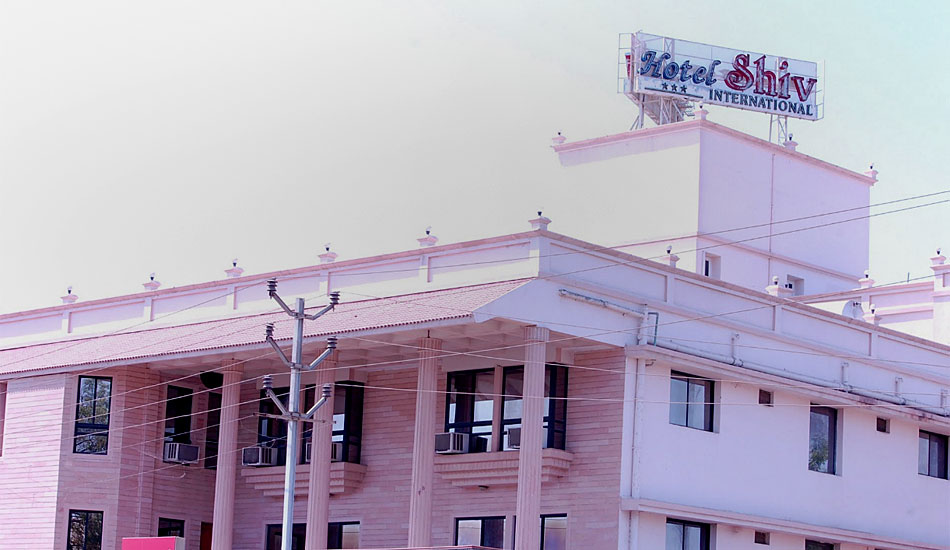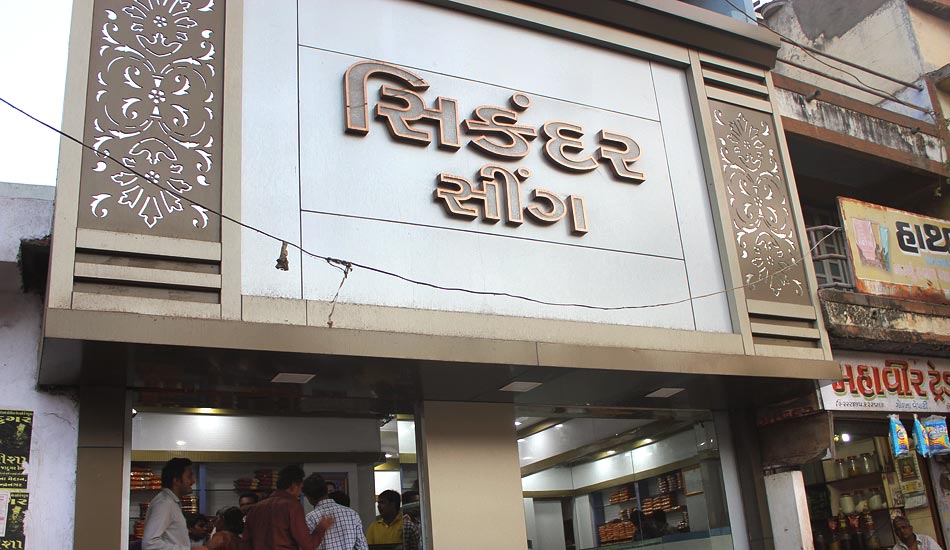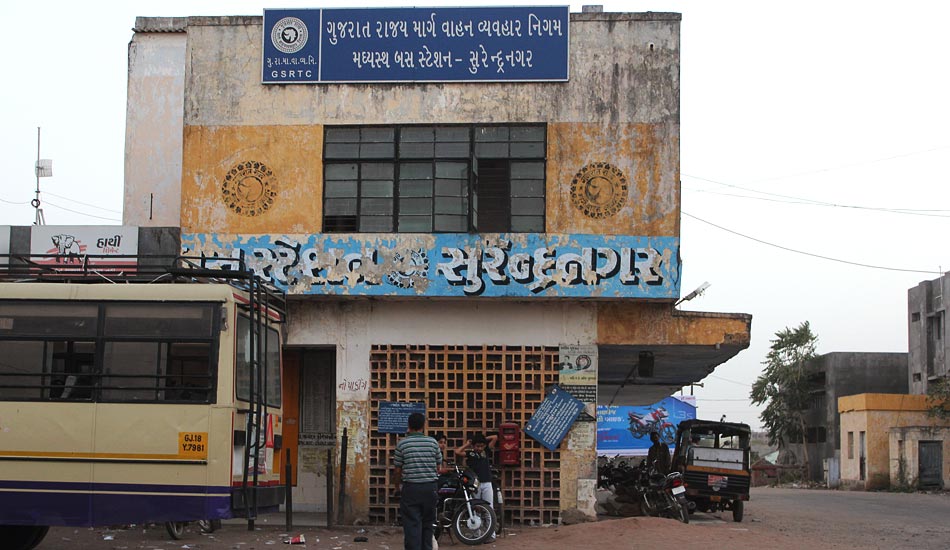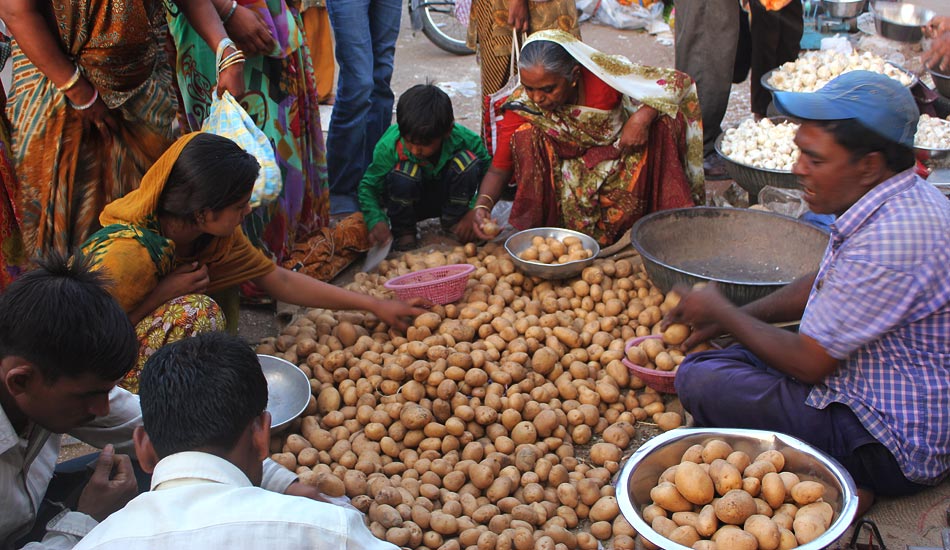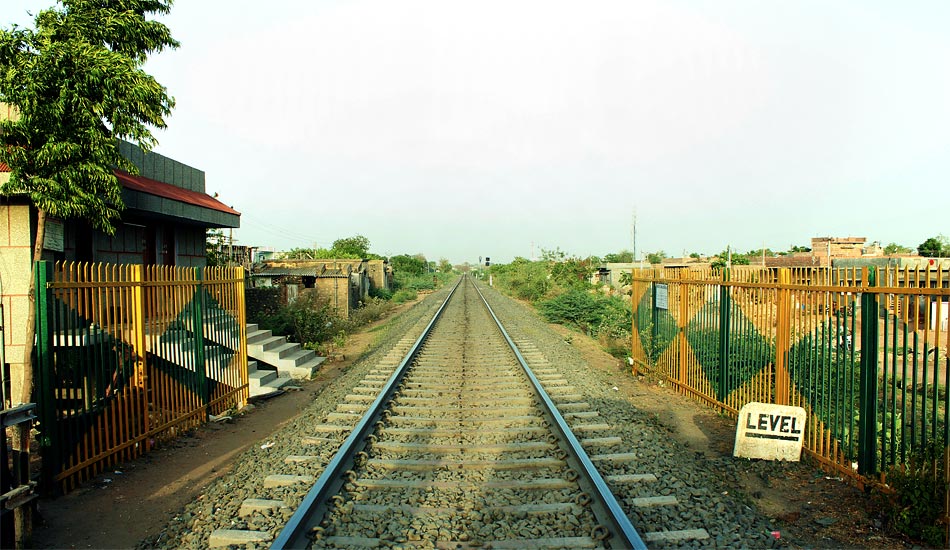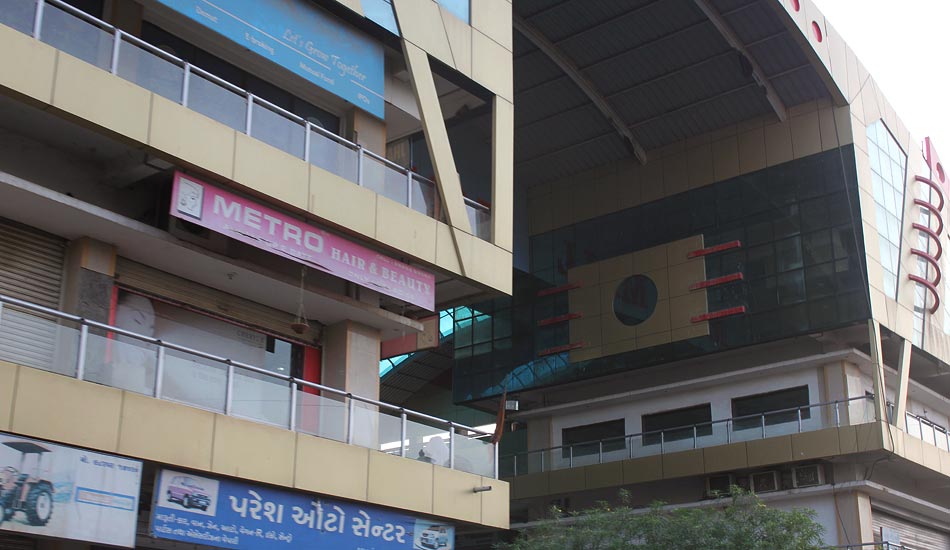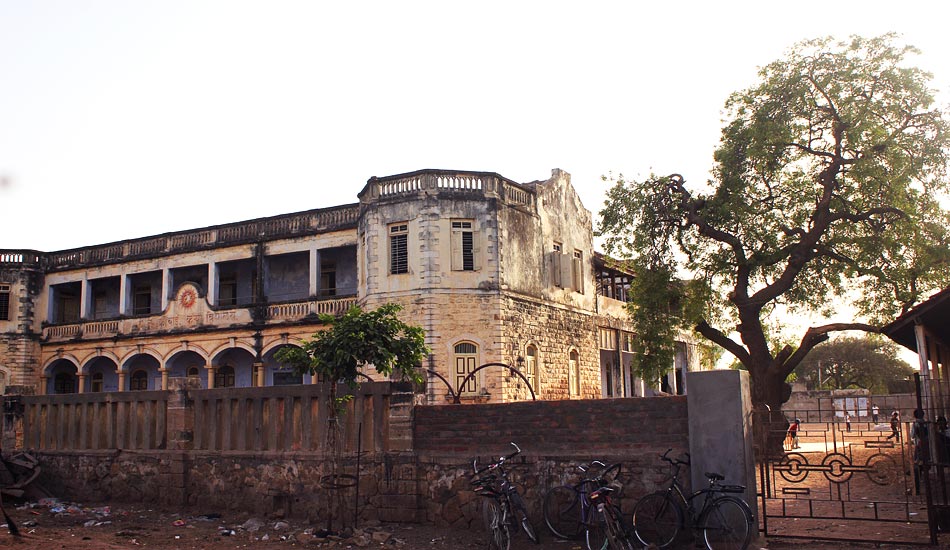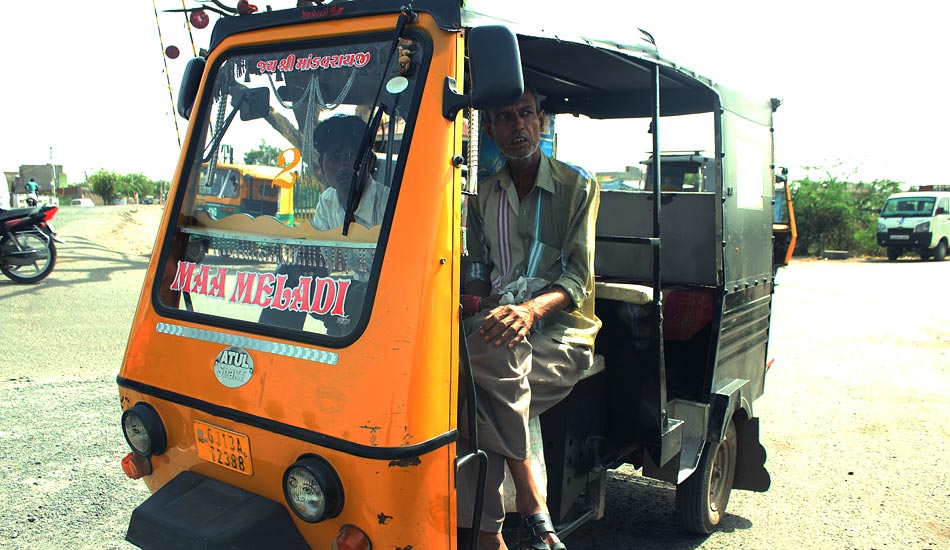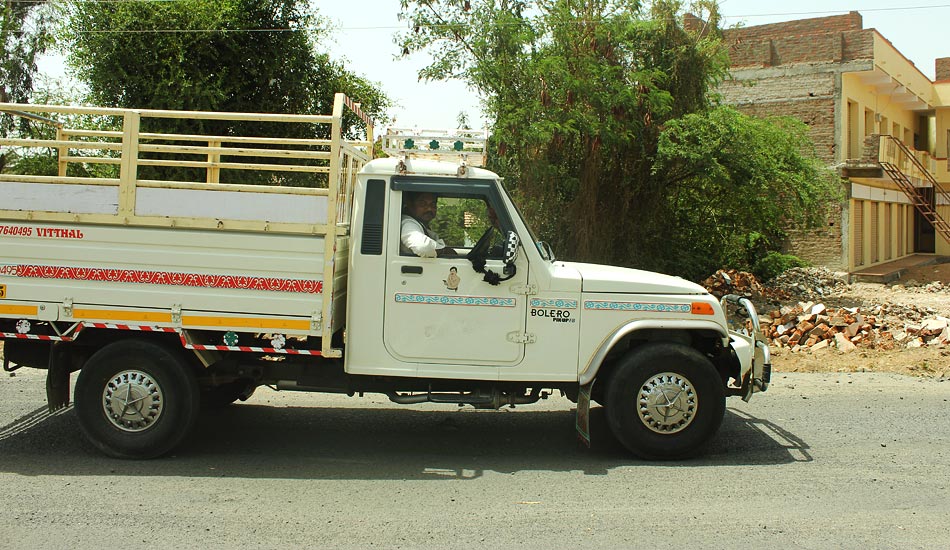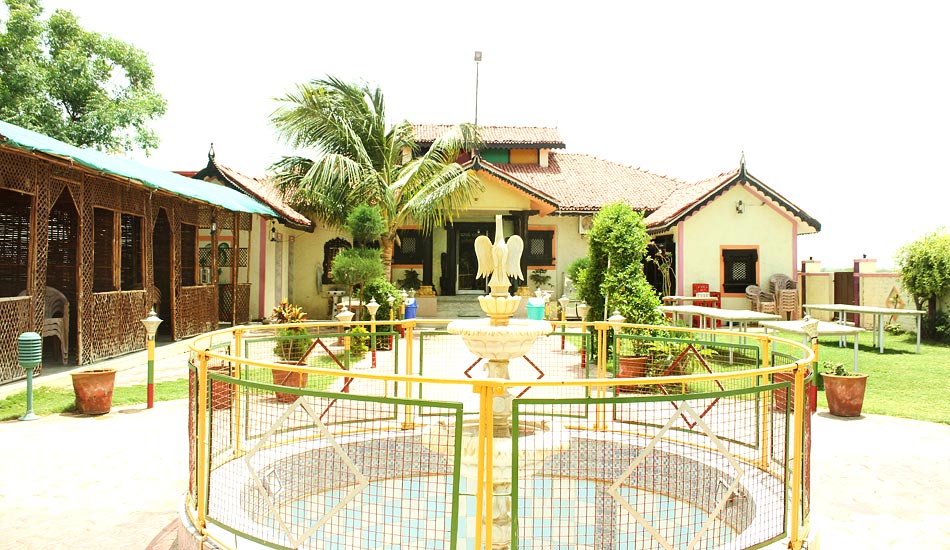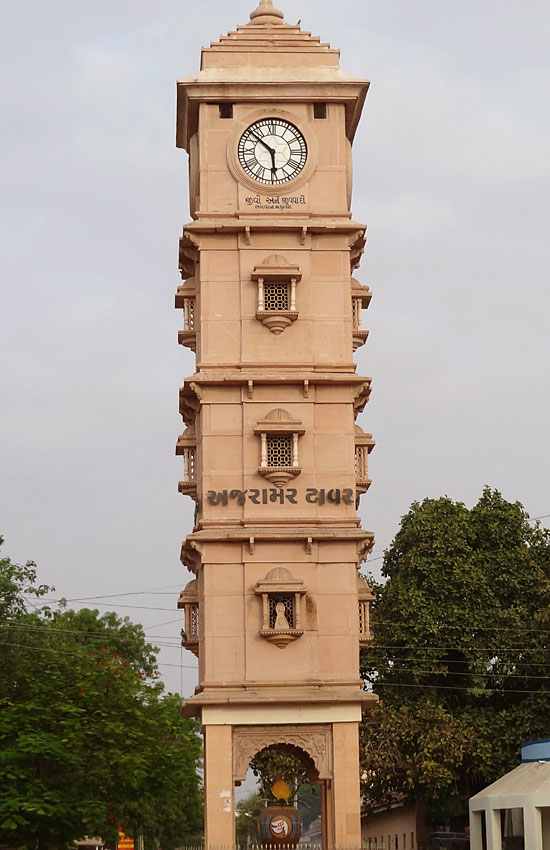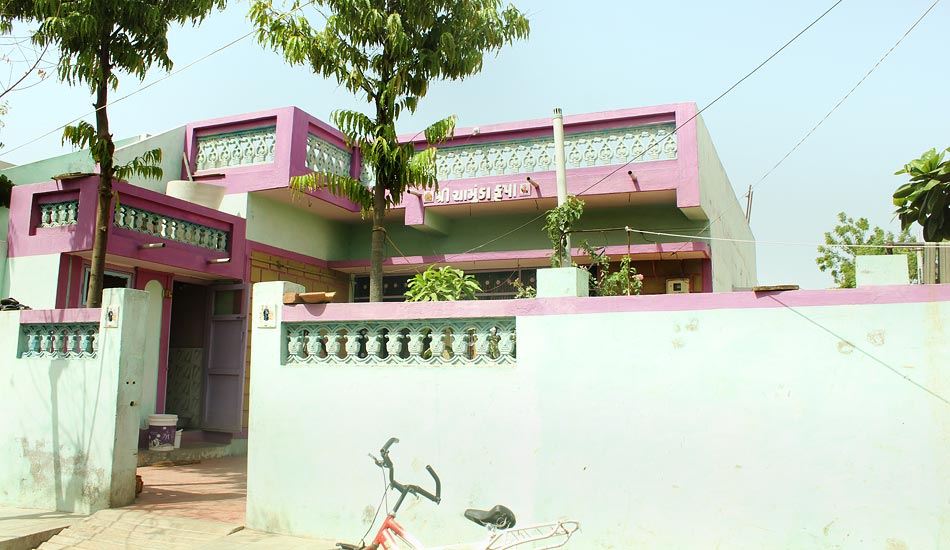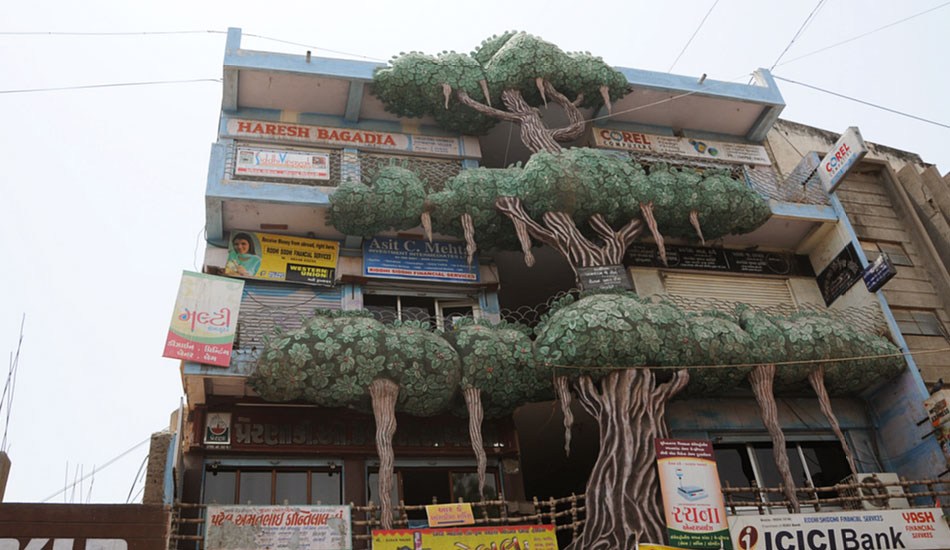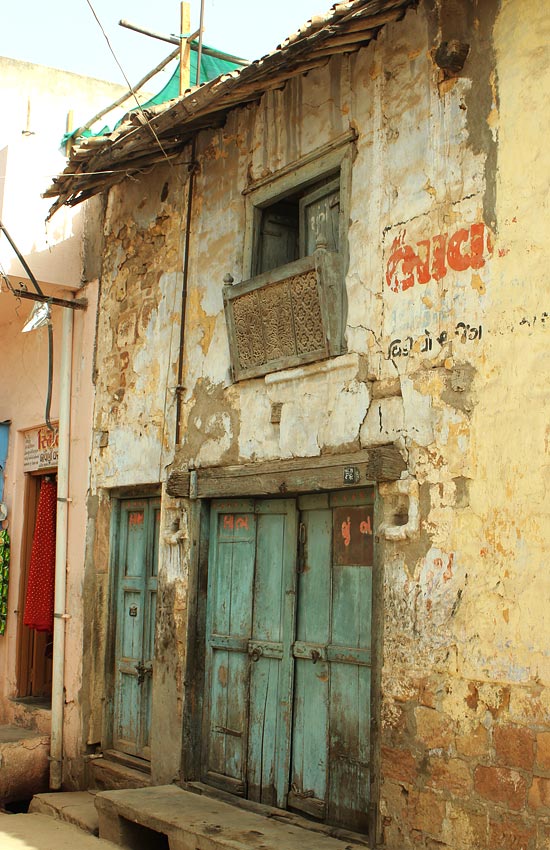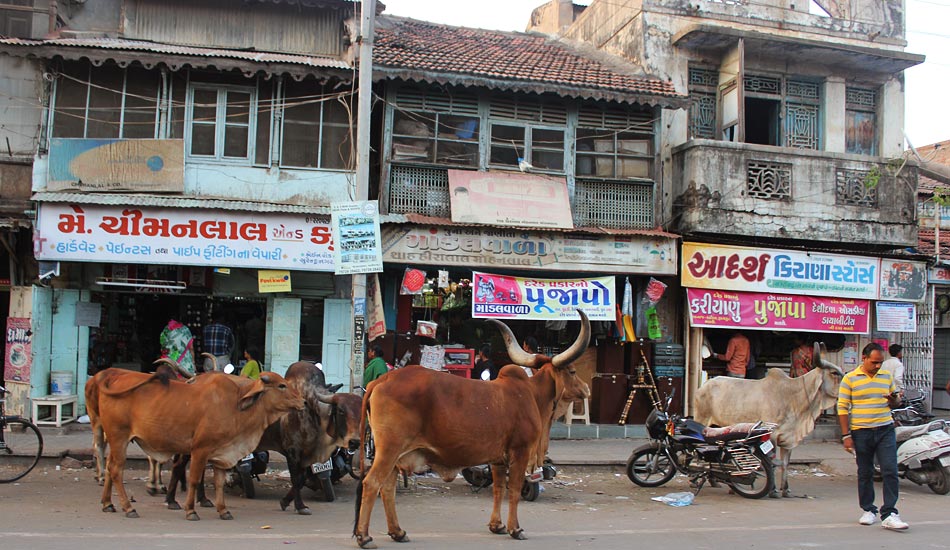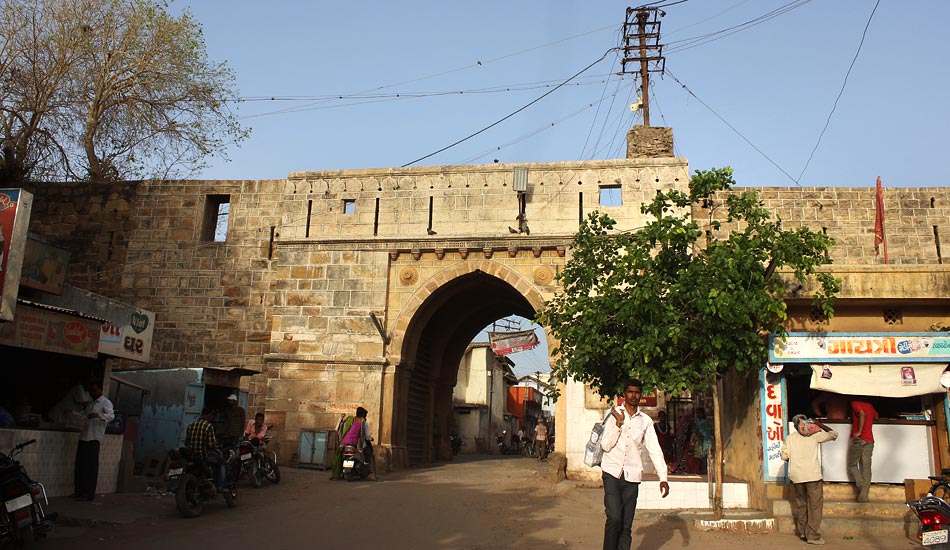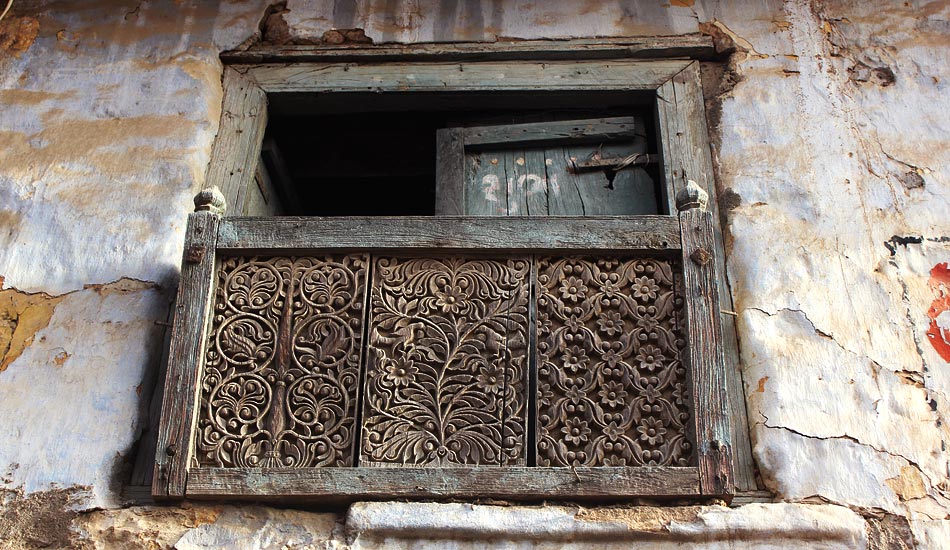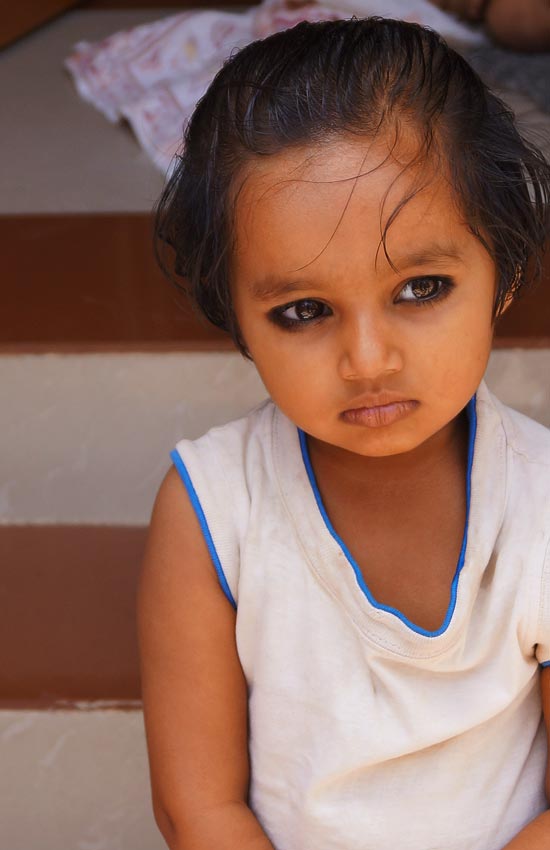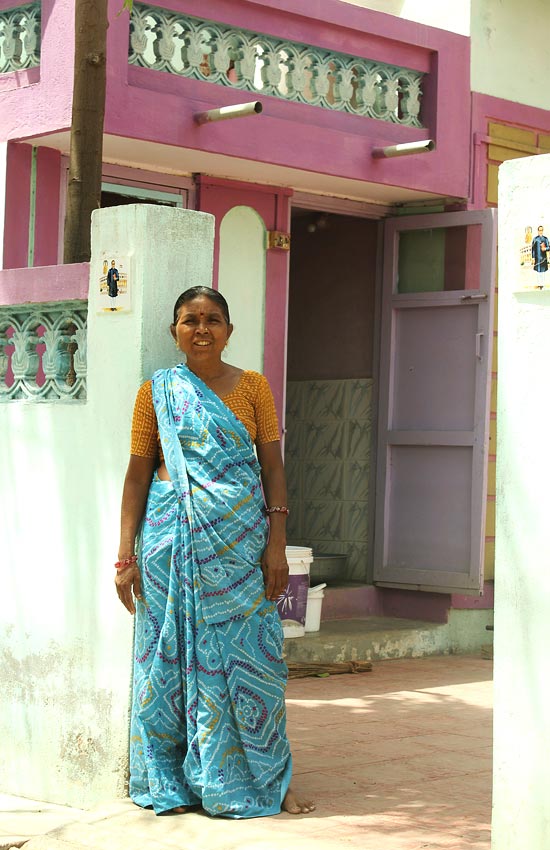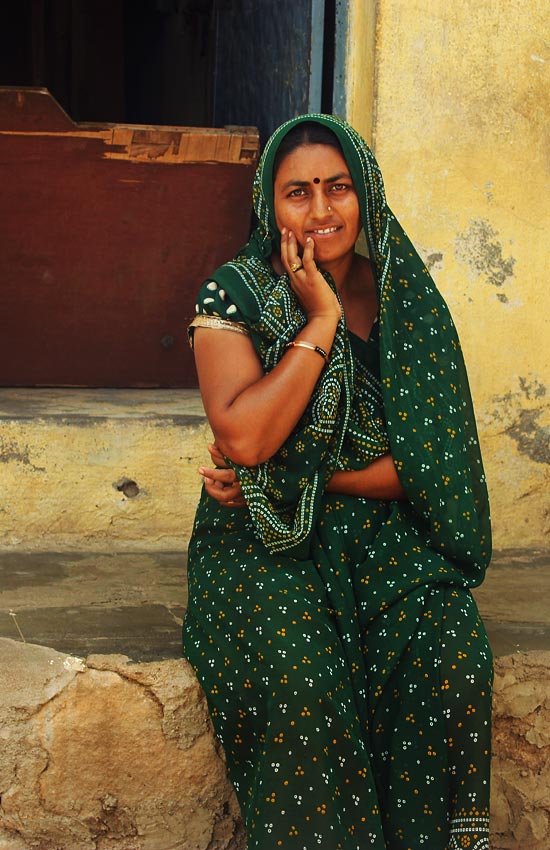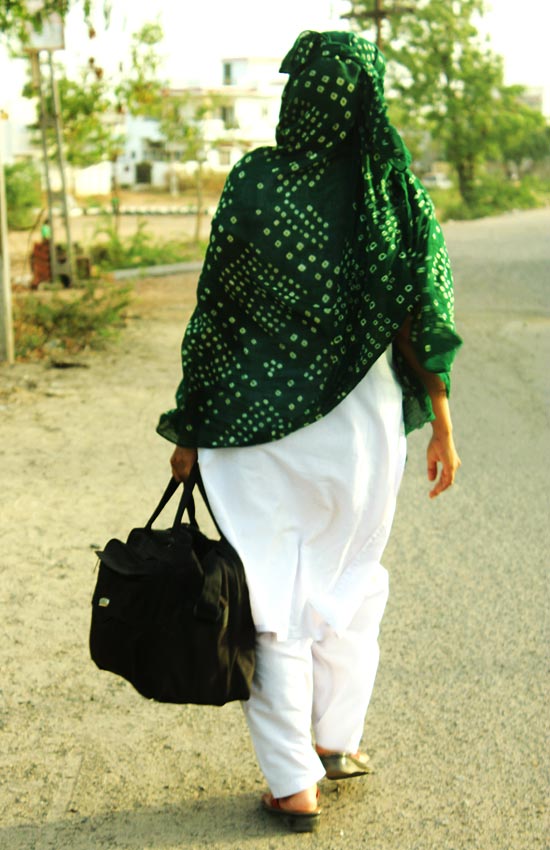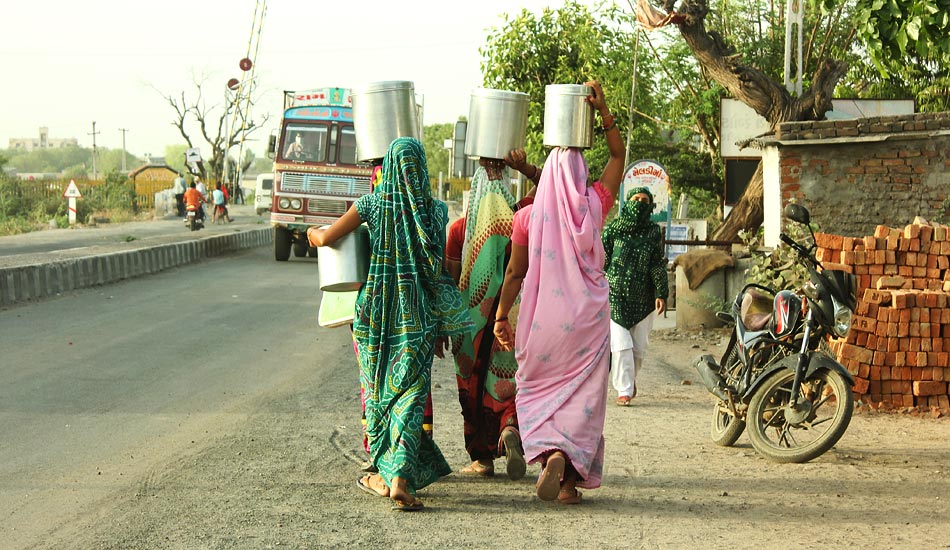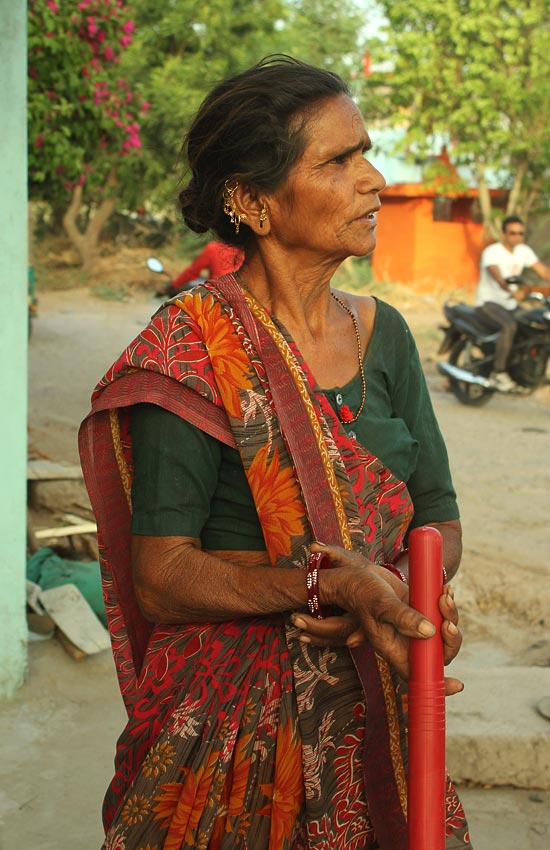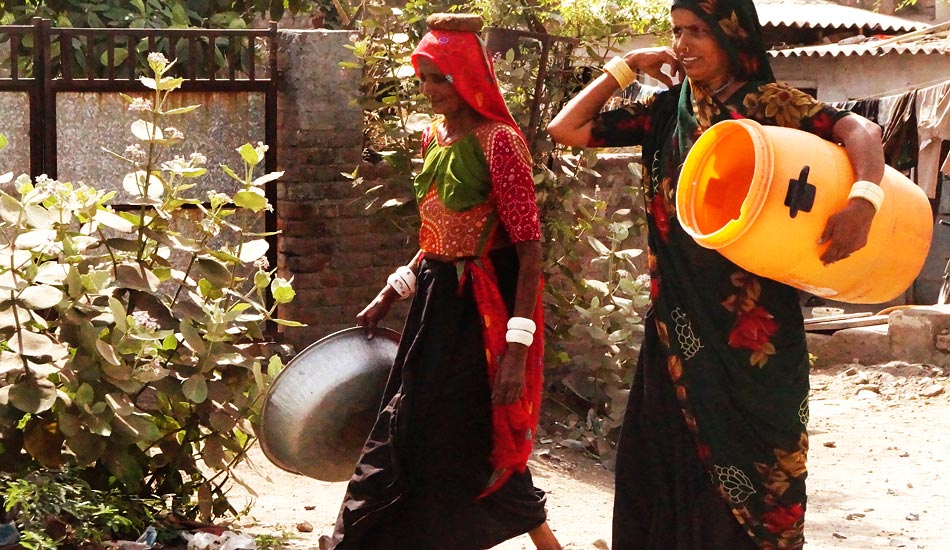Introduction:
Usage:
The oldest known historical evidence of the existence of Patola can be found in the Ajanta frescoes then in Kerala in the wall paintings of the Mattancheri and Padmanabhapurum palaces dated 17th and 18th centuries. It is recorded in the religious books like Ramayan & Narsinha Puran that Patola were used in great ceremony and in the marriage as a holy charm dressing. In the period of Ram-Rajya, king Janak had presented Patola to Sitaji (Wife of God Ram). Also in the period of great Lord Krishna, Narsinha Mehta (great devotee of Lord Krishna) had presented Patola to Kunvarbai.
Legend says that over seven hundred Patola weavers came to the palace of Raja Kumarapala. At that time the ruler used to dress in Patola silk himself on special occasions. After the decline of the Solanki Empire, the Salvis founded a rich trade in Gujarat. Patola saris quickly became a sign of social status among Gujarati women and girls, especially as part of stridhan, items that a woman can claim as her own property within a marital household.
Historically atleast several centuries old it is recorded in the religious books like Ramayan and Narsinha Puran that Patola were used in great ceremony and in the marriage as a holy charm dressing. In the period of Ram-Rajya, king Jank had presented Patola to Sitaji (wife of God Ram). Also in the period of great Lord Krishan, Narsinha Mehta (great devotee of Lord Krishna) had presented Patola to Kunvarbai. It is believed that this tradition art received great patronage during the Chalukya period of King Kumarpul reign as before 800 (approx.) years. During the period of King Kumarpul, the queen used to wear a new Patola (sari) every day. This is also recorded in the autobiography of Kumarpal. The art of Patola weaving is an ancient one. According to some historians, the art of Patola weaving was known also in the 7th Century in ‘Ajanta’ caves (near Mumbai, India) which resembles the tie-dyes technique of Patola.
Patola was considered a holy cloth in Indonesia, Thailand and Malaysia. They believe that it had magical powers that could protect them from evil.
Significance:
Considered to bring in luck and prosperity, a Patola Sari is often passed on as an heirloom or worn during baby showers.
Both the sides of Patola sari display the same design. Each sari can survive over a century without losing colour. On a Patola, the square represents security in every aspect of life. The elephant, parrot, peacock and ‘kalash’ are considered ‘saubhagya’ (good luck).
What also makes this craft unique is its technique of tie dyeing the weft in the character of the motifs and then weaving it through plain coloured warp bringing out the beauty of the motifs in the process.
Myths & Legends:
The oldest known historical evidence of the existence of Patola can be found in the Ajanta frescoes then in Kerala in the wall paintings of the Mattancheri and Padmanabhapurum palaces dated 17th and 18th centuries. It is recorded in the religious books like Ramayan & Narsinha Puran that Patola were used in great ceremony and in the marriage as a holy charm dressing. In the period of Ram-Rajya, king Janak had presented Patola to Sitaji (Wife of God Ram). Also in the period of great Lord Krishna, Narsinha Mehta (great devotee of Lord Krishna) had presented Patola to Kunvarbai.
Legend says that over seven hundred Patola weavers came to the palace of Raja Kumarapala. At that time the ruler used to dress in Patola silk himself on special occasions. After the decline of the Solanki Empire, the Salvis founded a rich trade in Gujarat. Patola saris quickly became a sign of social status among Gujarati women and girls, especially as part of stridhan, items that a woman can claim as her own property within a marital household.
Historically atleast several centuries old it is recorded in the religious books like Ramayan and Narsinha Puran that Patola were used in great ceremony and in the marriage as a holy charm dressing. In the period of Ram-Rajya, king Jank had presented Patola to Sitaji (wife of God Ram). Also in the period of great Lord Krishan, Narsinha Mehta (great devotee of Lord Krishna) had presented Patola to Kunvarbai. It is believed that this tradition art received great patronage during the Chalukya period of King Kumarpul reign as before 800 (approx.) years. During the period of King Kumarpul, the queen used to wear a new Patola (sari) every day. This is also recorded in the autobiography of Kumarpal. The art of Patola weaving is an ancient one. According to some historians, the art of Patola weaving was known also in the 7th Century in “Ajanta- caves (near Mumbai, India) which resembles the tie-dyes technique of Patola.
Patola was considered a holy cloth in Indonesia, Thailand and Malaysia. They believe that it had magical powers that could protect them from evil.
History:
Patola has a royal history. Silk weavers of the Salvi caste from the states of Karnataka and Maharashtra chose Gujarat as the home for their renowned Patola fabric. It is believed that Salvis went to Gujarat in the 12th century with the intention of acquiring the patronage of the Solanki Rajputs, who ruled all of Gujarat and parts of Malva and south Rajasthan at the time, with Anahiwad Patan as the capital. In Gujarat literature the earliest mention of patolas appears around the eleventh century. Patolas are also frequently mentioned in the Kunvar-bai-nu-Mameru of Narasimha Mehta, a fifteenth century court poet, by Premchand, a seventeenth century poet, and several others. The Salvi weavers came and settled in Patan and have been practicing the craft of double ikat Patola weaving for several generations. However, in the later half of the twentieth century, the craft start disseminating and more and more weavers started giving it up for occupations, which gave them a better livelihood. But, this dissemination gave birth to the craft of single ikat patola weaving, which separated from Patan to spread over the region, primarily thriving in Surendranagar and Rajkot.
Design:
The Patola was traditionally woven in a sari length of 5 to 9 yards by 45 to 54 width. The range now extends to include tablecloth borders scarves, handkerchiefs.
Design Elements: Essentially the design in a Patola is based on traditional motifs called ‘Bhat’. These designs include ‘narikunj’, ‘paan’, ‘phulwadi’, ‘chowkdi’, ‘raas’, ‘chhabdi’, ‘choktha’, ‘navratana’, ‘paanchphul’, ‘sarvariya’, ‘laheriya’ etc., which are all made on graph paper and then taken forward.
Flowers, animals, birds and human figures form the basic designs. New geometrical designs using vegetable dyes were developed and displayed at the Festival of India held in Paris, London, Tokyo, Washington and Moscow. The designs are first drawn on papers to achieve accuracy in tie & knots, and then transferred to looms, with great care and cautiousness. A craftsman (Weaver) can weave only five to six inches within a day. After working for 10 to 12 hours, no Sunday holiday and whole family working together, it takes one and half year to complete a Patola saree.
The single ikat patola sari has motifs, which are less densely woven as compared to the double Ikat patola. The colours are different as well, with not more than three colours in a sari in varied shades. They also use zari threads, giving certain sheen to the sari, which also increases its price.
The body of the sari is mostly plain with bold stripes of the same colour in different shades and borders lined with animal or plant motifs. The saris of a higher range have motifs on the body as well.
Challenges:
This craft faces the challenge of not extinction but the loss of originality in the process of fitting and existing in a machine oriented world, giving up its originality of colour and motifs to a large extent, picking up design elements from machine made saris to go hand in hand with the market.
Introduction Process:
Raw Materials:
1) Silk Threads: The best mulberry silk available in the market is preferred for the production of Patola saree weaving. They are imported from Bangalore at the cost of Rs 5000 per kg. About 500 gms of this is required to weave one single ikat patola.
2) Zari Threads: These are also imported from Bangalore at the cost of Rs 8000 per 500 gms. The more zari used in a Patola, the more expensive it is.
3) Natural and Chemical dyes: For natural dyes, the Harda Treatment is critical. The material used is Harda powder, Baheda Powder, Nag Kesar, Tamal patta. The next step is second is Mordant Application. The material is Tin chloride, alum, Pattasim Dichromate, Copper sulphate.
Tools & Tech:
1) Slant Loom: is used to interlace the warp and weft yarns.
2) Bamboo poles (Kamthi) are used to fasten the warp beam at the further end of the loom.
3) Wooden sword or beater It is used to held the interlaced yarns together near the cloth beam.
3) Cloth beam (tor): The woven fabric rolled on to the beam on the loom.
4) Shuttle (Nali) is used to insert the weft thread into the loom. 5) Yarn winder (Parita) is used to wind the yarn to the spindle.
6) Vessels for dyeing are used to apply the colour on the silk yarn.
7) Quill like iron needles is used to adjust the slight shifting yarns and ensure perfect colour alignment.
Rituals:
As per the craftsmen, King Kumarpala in around 12th century had shifted to Patan and initiated about 700 weavers for the Patola weaving. It takes about six months to a year of time for making the Patola fabric from pre-loom to post- loom. King ensured that there were regular supplies of the new Patola fabric every morning for his visit to the temple, where the fabric considered being pure and auspicious. There was a custom followed in this region that, during the ceremony of the Shrimanta (Godhbharai in Hindi) i.e. during the ritual of the seventh month of the pregnancy of a women, Patola saree with igures of dancing women, elephants and parrots were usually gifted to her. It is also gifted to the Gujarati women, girls as sign of social status that she maintains as her own property in her wedded household. Few of the silk weavers from the Slavi caste, whose ancestors basically originates from the states of Karnataka and Maharashtra chose Gujarat as their domicile for the skills of making the Patola saree during the 12th century.
process:
Patola weaving is one of the difficult forms of weaving in the world, which follows the double and single ikat (tie and dye) style for the warp and weft yarns dyed according to the pre designed patterns before dyeing. Patan, Surendranagar and Rajkot of Gujarat in India are some of the places where few of the weavers still practice this craft.
Following are the seven main processes of preparing a Patola:
~Process of making silk pure. (Conversion of raw silk in to pure silk). Each main process of weaving Patola is sub divided into 3 to 4 sub processes.
~Process of making the weft.
~Process of tie-dyeing the knots on warp and weft.
~Process of dyeing.
~Process of weaving.
~Process of adjusting each threads of warp and weft.
~Process of finishing the fabrics.
1) The weft silk threads are tied separately with cotton thread on the portions already marked out in conformity with the proposed design in the fabric. This tied portion is meant to remain unexposed to the colour while dyeing. United portion, which has absorbed one colour, may be tied while dyeing in another colour. Tying untying, re-tying and dyeing in different shades are the main features of this process.
2) After completion of dyeing work of wefts, the threads of the warp are put together in a sequence on the loom, so that the design becomes visible. The threads of wefts are wound on to bobbins and kept in the bamboo shuttle for weaving process.
3) The tension of the warp threads are removed by the help of needle after every time weaving of 8- to 10- of fabric. Patola weaving is a highly accurate just a positioning of warp and weft of similar colour to obtain perfect design and harmony. The process is labour intensive, time consuming and requires high order of skill and dexterity.
4) It takes about 10-12 days to prepare tie- dyed design on warp and weft threads for one sari of 6 yards length by 48- width. Two weavers working together weave just about 8- to 9- a day. It takes about 7 days to weave a sari.
Waste:
Cluster Name: Surendranagar
Introduction:
Approximately 1.7 million people inhabit Surendranagar, an administrative district in the state of Gujarat in India. Surendranagar is also known as Jhalawad, as Jhala Rajputs ruled many principalities of Surendranagar district. Surendranagar is known as the city of Hi-Tech Bungalows. It was also known as "Camp".
District / State
Surendranagar / Gujarat
Population
Language
Gujarati, Hindi, English
Best time to visit
September-March
Stay at
How to reach
Buses from Ahmedabad and Rajkot
Local travel
Auto Rickshaw, Cycle Rickshaw, Buses, Cabs
Must eat
History:
The region of and around Surendranagar was possibly under the control of other traditional dynasties ruling over several varied regions of the state of Gujarat though no significant information is available about the past history of Surendranagar.
After the mobilization of the states, the now Surendranagar district was called Jhalawad. The present district, which is called Surendranagar, was the head quarter of the British political agent. Political agents left from the Wad van camp and returned it to the ruler of Wad van in the year 1946 AD. There after it was named Surendranagar again in 1947 as per the name of the past king of Wadvan, Surendra Singh ji. Since 1948, Surendranagar has remained as the main center of the district. Surendranagar is one of the districts of the Saurashtra sub state.
Architectural research has been done on a small scale in the district and some places of pre-historical habitation are found. In the year 1957-58 some equipment of the era after the stone age are found from Sejakpur in Sayala taluka. This depicts the culture of the era after the Stone Age, which had the economy, principally, of the hunters and fishers. The equipment used by the people at the start of the mythological era is also found from this district.
Geography:
The district occupies an area of 10,489 square kilometers (4,050 sq. mts). As of 2001, it has a population of 1,515,148, out of which 26 per cent live in cities. Surendranagar District of Gujarat is situated between 22°00' to 23°05' North altitude and 69°45' to 72°15' East longitudes. The district has Ten Talukas and two main industrial and commercial centers of Gujarat and Saurashtra, are at equal distance from Surendranagar.
It has an average elevation of 128 metres (420 ft). The city is located on the bank of Bhogavo River, which remains dry except the monsoon months of July to September.
Environment:
Surendranagar has a semi-arid climate, with hot, dry summers from mid-March to mid-June and the wet monsoon season from mid-June to October, when the city receives 590 mm of rain on average. The months from November to February are mild, the average temperature being around 20 °C, with low humidity. One of the most important weather phenomena, which are associated with the city of Surendranagar, is 'cyclone'. The cyclones generally occur in the Arabian Sea during the months after the rainy season. The region experiences a lot of rainfall and high-speed winds during the time of the year after the monsoon season as well as the months of May and June. However, June experiences lesser amount of rainfall and winds than the post- monsoon time. Thunderstorms are another important part of the weather in the months of June and July. During summer time, the temperature ranges between 24 °C and 42 °C. In the months of winter, temperature varies between 10 °C and 22 °C but on a whole winters are pleasant.
Infrastructure:
The city of Surendranagar is well equipped with a bus stand and a railway station with the nearest airport at Rajkot, about an hour away. There are hotels with a range of varied tariffs to suit customers from different financial strata. There are shops in the market places for all kinds of necessities and the city has higher secondary schools, twenty-four hour electricity, hospitals and educational institutions. The roads are mostly permanent, though in the interiors of the city and surrounding villages, there are still temporary muddy roads. Local transport is plenty and comfortable.
Architecture:
Houses in the area are of a lot of kinds. Mostly, the houses are bricked and cemented with clay tile roofs. Some houses are big, up to three storeys big and painted in bright colours with a courtyard and area for vehicle parking. There are mud houses in the interiors, which are small and have thatched roofs. Some are even brick houses with clay tile roofs. In the older houses, which are mostly made of bricks and wood, the balcony railings have elaborate intricate metal work in shapes of vines and lower tessellations. The windows and doors of the older houses are big wooden ones and have carved designs as well.
Culture:
A Hindu dominated area; all the Hindu festivals are celebrated with much enthusiasm and valor. They have elaborate rituals both communities oriented and religious, signifying a very vibrant culture. Navratri is celebrated with great luminosity and is awaited all year round. Houses are decorated and lit up on all major festivities with a play roll of the local music and dances. Lord Shiva and Lord Hanuman are the two Hindu deities that are largely worshipped in this region, with temples at a distance of every few meters throughout the town and its outskirts.
People:
The people of Surendranagar are called 'Kathiawari' Gujaratis and this community have a way of life different from other Gujarati communities. Their accent and language of Gujarati differs variedly and they have differences in cuisines and culture as well. The women of this area mostly wear bandhani saris when married and salwar kameez with bandhani dupattas before marriage. The men wear kurta pajamas on special occasions and trousers, shirts and tshirts on a regular basis.
Famous For:
Raj-Rajeshwari Temple, on National Highway Number 8 near Limbdi, is a large area of residences, hospitals, and schools. The temple features an exhibition of yoga performed by Rishiji. This temple has temples to three major gods' Brahma, Vishnu, and Mahesh' inside. It is the only such temple in Gujarat. The temple is noted for its architecture.
The famous kund known as 'Gangavo' is located in Dedadara village. It was developed in the 11th century. 'There are many cultural institutions' Shabdalok sahitya vartul (founder: Dr.Nagjibhai Desai)
Nanalal sahitya sabha (Ramesh Acharya) Kalamandir Group (founder: Atulkumar Vyas) Club of Desert lions.


